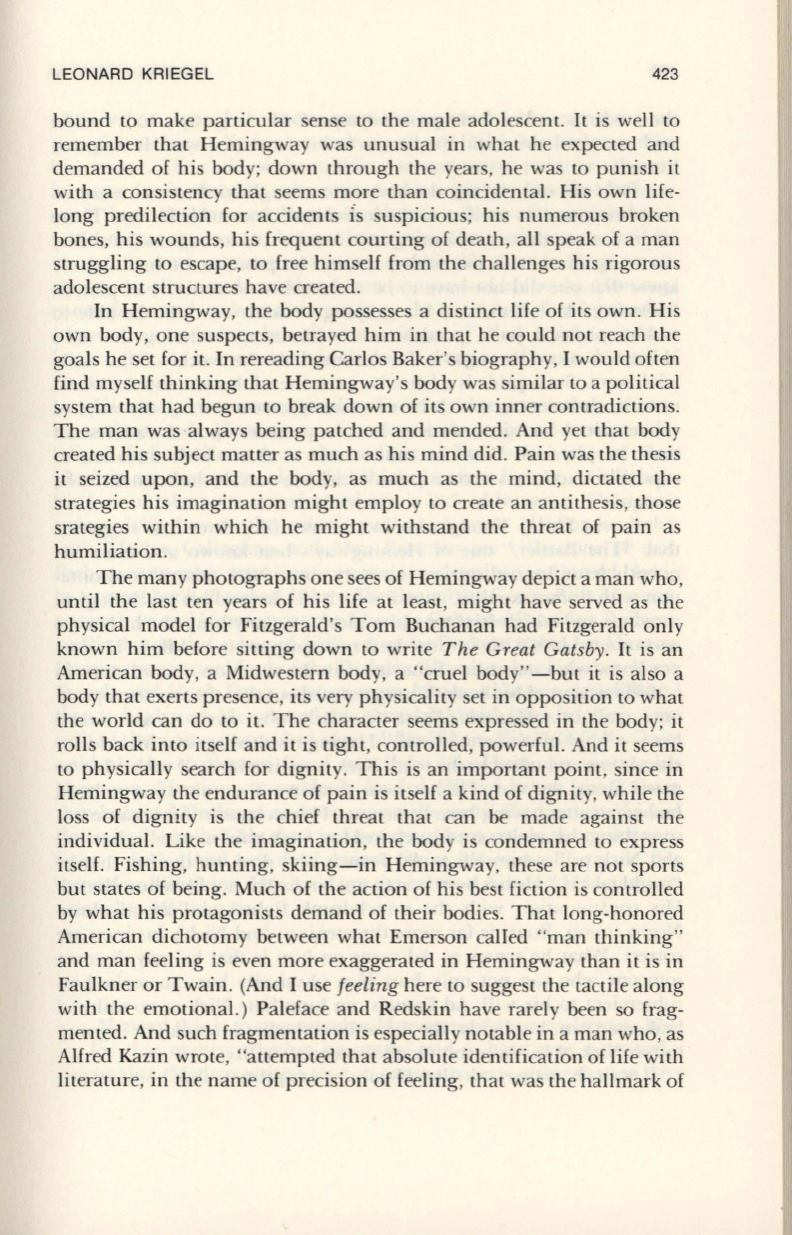
LEONARD KRIEGEL
423
bound to make particular sense to the male adolescent.
It
is well to
remember that Hemingway was unusual in what he expected and
demanded of his body; down through the years, he was to punish it
with a consistency that seems more than coincidental. His own life–
long predilection for accidents
lS
suspicious; his numerous broken
bones, his wounds, his frequent courting of death , all speak of a man
struggling to escape, to free himself from the challenges his rigorous
adolescent structures have created.
In
Hemingway, the body possesses a distinct life of its own. His
own body, one suspects, betrayed him in that he could not reach the
goals he set for it.
In
rereading Carlos Baker's biography, I would often
find myself thinking that Hemingway's body was similar to a political
system that had begun to break down of its own inner contradictions.
The man was always being patched and mended. And yet that body
created his subject matter as much as his mind did. Pain was the thesis
it seized upon, and the body, as much as the mind, dictated the
strategies his imagination might employ to create an antithesis, those
srategies within which he might withstand the threat of pain as
humiliation.
The many photographs one sees of Hemingway depict a man who,
until the last ten years of his life at least, might have served as the
physical model for Fitzgerald's Tom Buchanan had Fitzgerald only
known him before sitting down to write
The Great Gatsby.
It
is an
American body, a Midwestern body, a "cruel body" -but it is also a
body that exerts presence, its very physicality set in opposition to what
the world can do to it. The character seems expressed in the body; it
rolls back into itself and it is tight, controlled, powerful. And it seems
to physically search for dignity. This is an important point, since in
Hemingway the endurance of pain is itself a kind of dignity, while the
loss of dignity is the chief threat that can be made against the
individual. Like the imagination, the body is condemned to express
itself. Fishing, hunting, skiing-in Hemingway, these are not sports
but states of being. Much of the action of his best fiction is controlled
by what his protagonists demand of their bodies. That long-honored
American dichotomy between what Emerson calIed "man thinking"
and man feeling is even more exaggerated in Hemingway than it is in
Faulkner or Twain. (And I use
feeling
here to suggest the tactile along
with the emotional.) Paleface and Redskin have rarely been so frag–
mented. And such fragmentation is especially notable in a man who , as
Alfred Kazin wrote, "attempted that absolute identification of life with
literature, in the name of precision of feeling, that was the hallmark of


